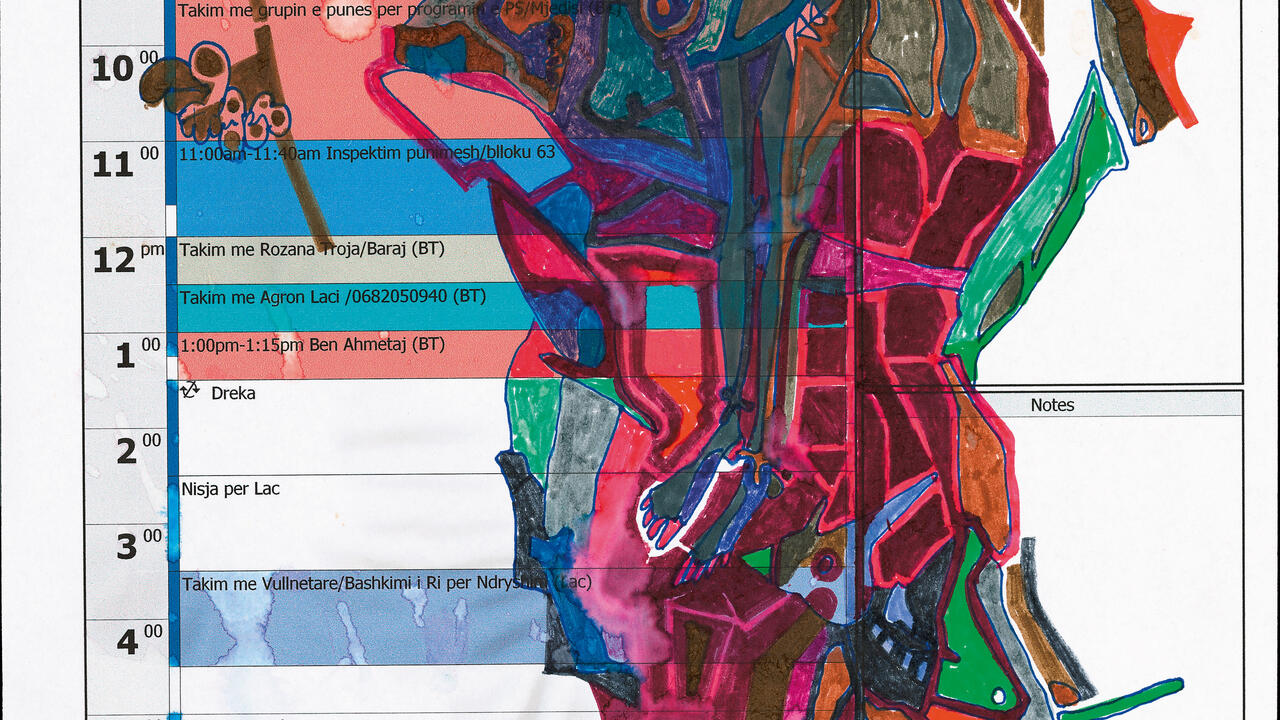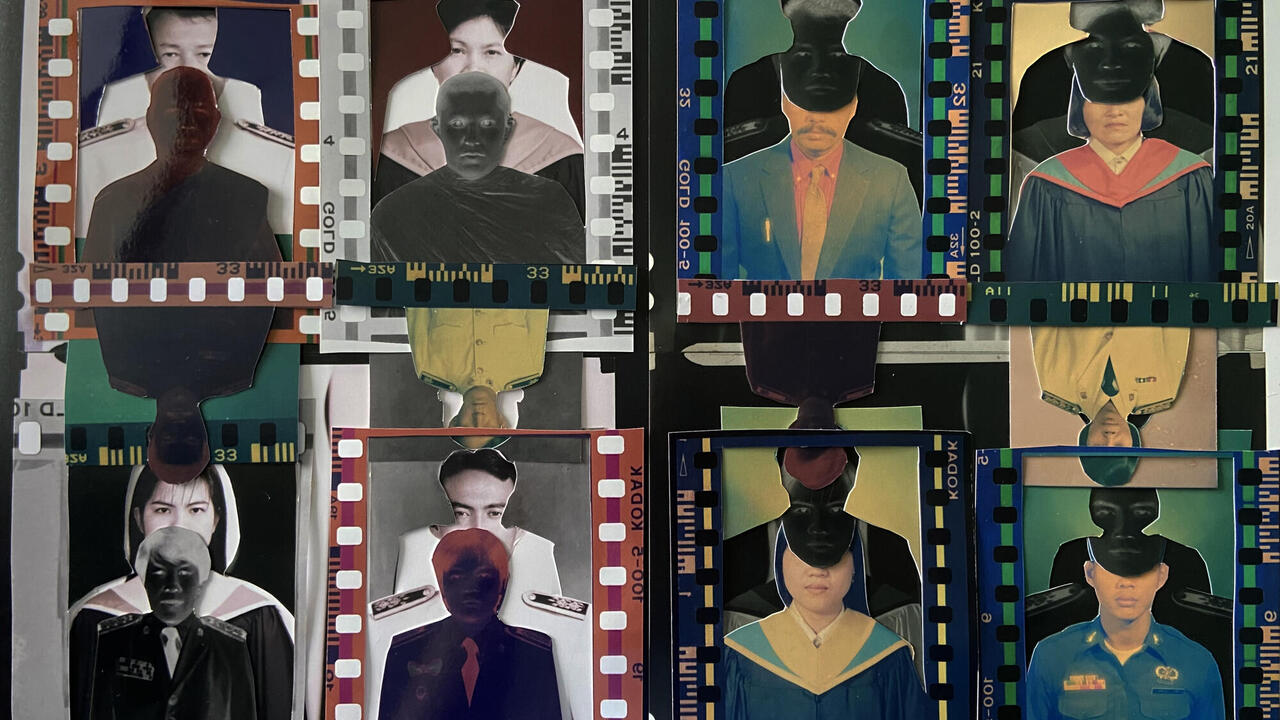50th Venice Biennale
Various Venues
Various Venues
'Love difference', urged the literature scattered around Michelangelo Pistoletto's alarmingly shiny table, which on closer inspection echoed the shape of the Mediterranean. After trudging through the Arsenale with its eight shows within the show, and its plethora of artistic voices all clamouring for attention, it seemed a crushingly obvious statement. Difference, the theoretical mantra of recent times, whether in terms of culture or a more generalized Postmodern rejoinder, was certainly embodied in the multi-curated Arsenale, which could well act as a blueprint for international jamborees of the future. For it is now a commonplace that overarching curatorial master narratives are a thing of the past, and that heterogeneity and difference must be acknowledged, and ideally embraced, in such mega-exhibitions. Yet Pistoletto's table showed how easily packaged and glibly re-churned a once radical concept can become.
Difference was also reduced to a stylistic tic in Hou Hanru's 'Zone of Urgency'. It began with a two-screen projection by Yang Zhenzhong that hinged on the sweet conceit that a gentle puff can have concrete, if stuttering, results on one's surroundings. Unfortunately the rest of the section was drowned in the curator's giant puff of half-digested globalization theory, which reduced the art to set-decoration and made viewing it ludicrously onerous. 'Zone of Urgency' was the low point at the heart of an Arsenale that started and finished well. Francesco Bonami's opening section, 'Clandestine', was an elegant exploration of everyday subversions and ordinary oddness. Enrico David's three masturbatory wooden men rotated regally slowly, dripping sensuality, while Hakan Gürsoytrak's paintings of clumpy, suited, anonymous men conveyed the banality of terror. The figures in Dana Schutz' work pleasingly looked like the Sims on acid and Shizuka Yokomizo's English spinsters playing the piano were a wonderful and moving testament to suburban sexual repression.
At the other end of the Arsenale the Nesbit-Obrist-Tiravanija effort 'Utopia Station' was another painfully earnest curatorial moment, with a fashionably chaotic look that proclaimed self-importance. Fortunately, however, it was redeemed through a number of excellent pieces, such as Anri Sala's film of buildings in Tirana being painted red, yellow, orange and a whole host of other colours in a derangedly utopian battle against the legacy of communist architecture. Disappointingly, Atelier van Lieshout's eco-toilets weren't really for use, although that didn't stop one critic (ahem), tanked full of mineral water and espresso, using one of them before the signs went up. Elsewhere in the Arsenale, four of the five other shows lurched from the noisy to the retentively ordered. Yet the lack of bite in these sections made it difficult to muster the motivation required to get much of a purchase on the works. Gabriel Orozco's charming, if slight, section 'The Everyday Altered' was the exception to this primarily because it allowed the works room to breathe.
Perhaps the only way to get to grips with the challenges of the Arsenale was to think about them in conjunction with Bonami's off-site 'Pittura/Painting: From Rauschenberg to Murakami, 1964-2003'. This curious show could well have been an exercise in how exhibitions can no longer be curated, and so formed an odd counterpoint to the Arsenale. Aside from the clunky inclusion of Murakami, it was a doggedly linear, elegant tour of recent Western painting. It was also undoubtedly melancholic. In particular, a central room containing Jean-Michel Basquiat's Scull (1982), a Martin Kippenberger washed-out sex painting, a small but nevertheless portentous smashed-earth Anselm Kiefer, a Francesco Clemente gouache of a vaguely masturbatory man with no torso, and Julian Schnabel's puzzling Aborigine Painting (1980) seemed to be some sort of grand farewell to something. (Painting? The Western canon? Aborigines?) Despite the title, Murakami wasn't really the last painting in the exhibition - at the dead end of the exhibition the viewer instead faced a blind Chuck Close staring unfocusedly back through a kaleidoscope of diamonds and blobs. Certainly an ending of sorts, but given that the Arsenale began with Jaan Toomik's almost unwatchable film of an artist barely articulating his struggle against debilitating illness, it seems pertinent to pose the question: what types of beginning are available in our brave new globalized world?





















